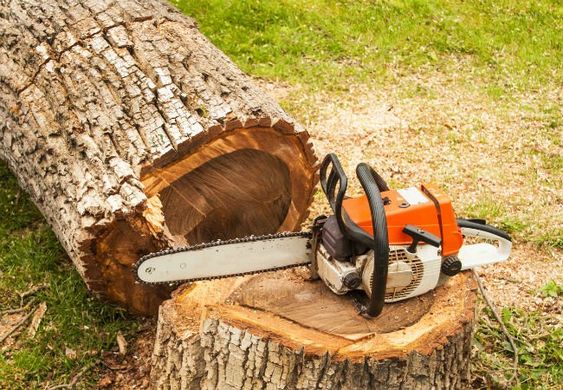How To Bid Tree Removal Services?

How to Bid Tree Removal Services: A Comprehensive Guide
Introduction:
Tree removal services require careful consideration and accurate pricing to ensure a successful and profitable job. Bidding on tree removal projects involves assessing multiple factors, estimating costs, and providing competitive quotes. In this comprehensive guide, we will explore the key steps and factors involved in bidding tree removal services. Whether you are an established tree service company or an aspiring arborist, this article will provide valuable insights to help you navigate the bidding process and secure successful contracts.
Evaluate the Tree Removal Job:
Before bidding on a tree removal project, thoroughly assess the scope of the job. Consider factors such as tree size, location, condition (e.g., dead or diseased), proximity to structures or power lines, accessibility, and any additional services required (e.g., stump grinding, debris removal, or tree trimming). Understanding the specifics of the job will enable you to provide an accurate estimate.
Calculate Labor and Equipment Costs:
Labor costs play a significant role in tree removal bidding. Consider the time required to complete the job, including tree felling, branch removal, stump grinding, and clean-up. Assess the number of workers needed and their hourly rates. Additionally, factor in the cost of equipment, such as chainsaws, wood chippers, and trucks, as well as any specialized equipment required for the specific job.
Assess Material Disposal and Recycling:
Consider the costs associated with disposing of tree debris and recycling materials. Determine if there are local dump-site fees or recycling facilities that can accept the wood chips or mulch generated from the job. Properly accounting for these costs ensures an accurate estimate.
Consider Safety and Insurance:
Tree removal is a hazardous job, so it’s essential to prioritize safety. Factor in the costs of maintaining safety equipment, training employees, and obtaining liability insurance. Adequate insurance coverage protects both your company and the customer’s property during the tree removal process.
Research Average Costs:
Research the average costs of tree removal services in your area to understand the competitive landscape. Consider factors such as the size and type of tree, as well as any additional services commonly offered. This research will help you determine a baseline price range for your bids.
Conduct Site Visits and Consultations:
Whenever possible, conduct site visits to evaluate the tree removal job firsthand. This allows for a more accurate estimate and ensures that all factors, such as tree size and condition, are considered. Consultations with the customer also provide an opportunity to discuss their specific needs and address any concerns.
Create an Estimate Template:
Develop an estimate template that includes all the relevant information for each bid. This template should include details about the job, labor costs, equipment costs, disposal fees, insurance considerations, and any additional services requested by the customer. Using a standardized template streamlines the bidding process and ensures consistency in your estimates.
Provide Free Quotes:
Offer free quotes to potential customers based on the information gathered during the evaluation and estimate process. Transparently communicate the scope of work, services included, and the estimated cost. Providing free quotes demonstrates professionalism and helps build trust with customers.
Consider Multiple Tree Removals:
If a customer requires the removal of multiple trees, offer discounted rates or package deals. Removing multiple trees at the same time can be more efficient and cost-effective, allowing you to provide competitive pricing while maximizing your profit margin.
Stay Competitive and Profitable:
Striking the right balance between being competitive and profitable is crucial. Ensure that your pricing covers your overhead costs, labor, equipment, insurance, and allows for a reasonable profit margin. It’s essential to understand your costs and maintain a thorough understanding of the market to submit competitive bids without compromising your business’s financial health.
Conclusion:
Bidding on tree removal services requires careful evaluation, accurate estimation, and competitive pricing. By considering factors such as tree size, labor costs, equipment requirements, safety considerations, and local market averages, you can create comprehensive and competitive bids. Delivering accurate estimates, providing exceptional customer service, and prioritizing safety will help you secure successful contracts and build a reputation as a reliable and professional tree removal service provider.
About Murray, Utah
Murray is a city situated on the Wasatch Front in the core of Salt Lake Valley in the U.S. state of Utah. Named for territorial governor Eli Murray, it is the state's fourteenth largest city. According to the 2020 census, Murray had a population of 50,637. Murray shares borders with Taylorsville, Holladay, South Salt Lake and West Jordan, Utah. Once teeming with heavy industry, Murray's industrial sector now has little trace and has been replaced by major mercantile sectors. Known for its central location in Salt Lake County, Murray has been called the Hub of Salt Lake County. Unlike most of its neighboring communities, Murray operates its own police, fire, power, water, library, and parks and recreation departments and has its own school district. While maintaining many of its own services, Murray has one of the lowest city tax rates in the state.
Neighborhoods in Murray, Utah
Murray Oakes, Grant Park, Southwood Park, Murray Park, Murray Park Restrooms, Willow Pond Park, Neighborhood Veterinary Care
Things To Do in Murray, Utah
Bus Stops in Murray, Utah to Truco Services, Inc.
Bus Stop in Murray Central Station (Bay C) Murray, Utah to Truco Services, Inc.
Bus Stop in State St @ 4801 S Murray, Utah to Truco Services, Inc.
Bus Stop in Murray North Station Murray, Utah to Truco Services, Inc.
Bus Stop in State St @ 4949 S Murray, Utah to Truco Services, Inc.
Bus Stop in Murray Central Frontrunner/Trax Station Murray, Utah to Truco Services, Inc.
Bus Stop in Murray Blvd / Vine St (SB) Murray, Utah to Truco Services, Inc.
Bus Stop in State St @ 3925 S Murray, Utah to Truco Services, Inc.
Bus Stop in State St @ 4824 S Murray, Utah to Truco Services, Inc.
Bus Stop in State St @ 5223 S Murray, Utah to Truco Services, Inc.
Bus Stop in Murray Blvd / Allendale Dr (NB) Murray, Utah to Truco Services, Inc.
Bus Stop in Murray Blvd @ 5039 S Murray, Utah to Truco Services, Inc.
Bus Stop in State St @ 4721 S Murray, Utah to Truco Services, Inc.
Driving Directions in Murray, Utah to Truco Services, Inc.
Driving Directions from Woodruff Tree Trimming and Removal to 4640 Commerce Dr, Murray, UT 84107, USA
Driving Directions from Reliable Tree Care to 4640 Commerce Dr, Murray, UT 84107, USA
Driving Directions from Tree Pro-Tech to 4640 Commerce Dr, Murray, UT 84107, USA
Driving Directions from Prestige Tree And Landscape to 4640 Commerce Dr, Murray, UT 84107, USA
Driving Directions from Excellence Tree & Landscape to 4640 Commerce Dr, Murray, UT 84107, USA
Driving Directions from Amen Trees to 4640 Commerce Dr, Murray, UT 84107, USA
Driving Directions from Tim's Tree Care to 4640 Commerce Dr, Murray, UT 84107, USA
Driving Directions from Jordan Tree Service - Murray to 4640 Commerce Dr, Murray, UT 84107, USA
Driving Directions from Arbor Works to 4640 Commerce Dr, Murray, UT 84107, USA
Driving Directions from Diamond Tree Experts to 4640 Commerce Dr, Murray, UT 84107, USA
Driving Directions from Green Tree Arborist to 4640 Commerce Dr, Murray, UT 84107, USA
Driving Directions from TruCo Services to 4640 Commerce Dr, Murray, UT 84107, USA
Reviews for Truco Services, Inc. Murray, Utah
Emily Abercrombie
We had a great experience with TruCo! They were well priced, responsive and prompt. Michael was a pleasure to work with and gave us advice on which plants to put in where we took out our ugly old shrubs. I would highly recommend this company!!!
Michelle Turpin
TruCo Services gets 5 stars from us for customer service. We experienced a few issues with their services this last year and Rob Eccles in senior management, stepped in and immediately handled our issues. He was very committed to making sure they understood our expectations and would execute to make us happy.
Siobhan Billingsley
I work for a property management company and have the pleasure of working with Rob at a community in Sandy. He has been incredible to work with and always responds in a timely manner. He knows all the homeowners by name and address and is aware of all the "problem" areas when it comes to sprinklers. I never have to worry about following up with him because he always reaches out to provide me with an update. If you're looking to work with someone who takes pride in their job, is professional, and can solve the worst landscaping problems thrown your way, Rob is your guy. Thank you, Rob for all you do!
Jaime S.
We have used Truco at 2 of the complexes we manage, they have been great to work with. Good quality service, outstanding customer service with good communication. That's hard to find these days. I highly recommend them. Travis has been awesome to work with.
Jerusha Smart
We use TruCo for a majority of our properties and our home. While other landscaping companies we use come and go for various reasons like cost, communication issues, work performance, etc., TruCo is always consistent in price and work. Also, Rob is the best.
